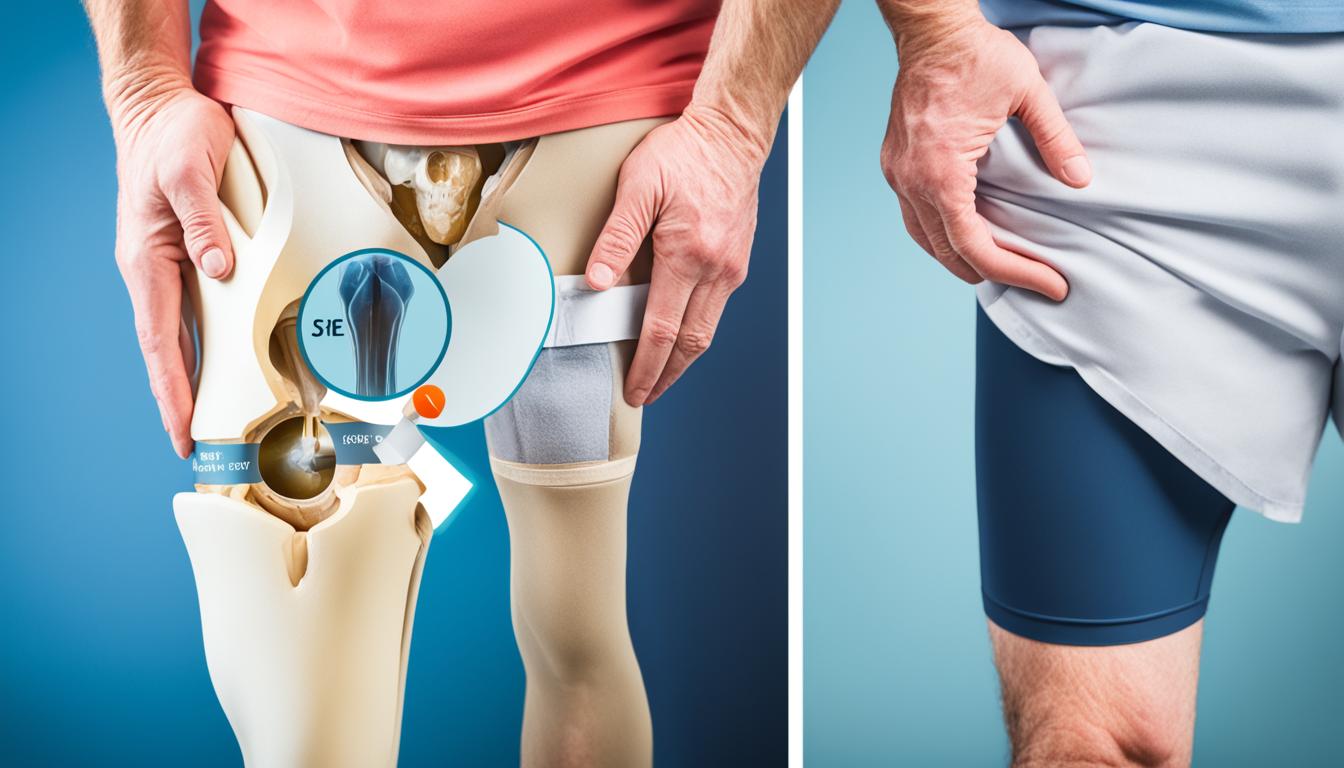Every year, more than 1.6 million people suffer from hip fractures worldwide. These injuries often happen to the elderly and are mostly from falls. Hip fractures bring serious pain, make moving hard, and have other health risks like bedsores and blood clots from staying still too long.
The usual ways to treat hip fractures, especially in older folks, can be slow and not always work well. But, new hope shines through stem cell therapy. This treatment uses cells that can speed up healing, helping with both bone and soft tissue repair.
Research has found that stem cell therapy boosts bone strength and speeds up recovery from hip fractures. It also cuts down on swelling, eases pain, and lowers complication chances. Plus, it’s a simple procedure that’s less risky than traditional surgery. This means it could be a big help for those not seeing good results with regular treatments.
Key Takeaways:
- Hip fractures can cause severe pain, disability, and loss of mobility.
- Standard treatment methods for hip fractures often have limitations, especially in older patients.
- Stem cell therapy can accelerate tissue healing and regeneration.
- Studies have shown that stem cell therapy can lead to increased bone density and improved healing.
- Stem cell therapy is minimally invasive and has a low risk of complications compared to traditional surgical approaches.
Benefits of Stem Cell Therapy for Hip Fractures
Stem cell therapy is becoming a top choice for treating hip fractures. It has major benefits. For example, it helps with bone regeneration. Stem cells make new bone tissue quickly. This speeds up healing.
Stem cells also reduce pain and swelling. After a hip fracture, these are big issues. The anti-inflammatory effects of stem cells make life better for patients.
Stem cells can turn into different cell types. This helps fix soft tissues, like bone and muscle. So, stem cell therapy is a big help in healing from hip fractures.
Using stem cells is also less invasive than surgery. It doesn’t need big cuts. Doctors inject the cells right at the break. This makes healing easier and faster for patients.
In the end, stem cell therapy works well for hip fractures. It helps with bone regrowth and easing pain. This means faster healing and better results for patients.
Diagnosis and Treatment of Fractured Hips
If you have a fractured hip, you might notice pain, swelling, and bruising. You might not be able to move that area. Doctors check this with a physical exam and tests like X-rays or MRI.
When treating a hip fracture, the goal is to let it heal naturally. This may include fixing the break and making sure the bones are in the right place. The area might be kept still with casts, braces, or through surgery. Healing can take weeks to months. The time varies by how bad the fracture is and if there are other problems, like infection.
After healing, you might need to do physical therapy to regain muscle and movement. Although most fractures heal well, there can be issues. These include wrong healing, bone growth problems, infections, and bones not joining back together.
If healing seems slow or doesn’t happen, doctors might try other treatments. These can include using ultrasound, bone grafts, or stem cells. To prevent fractures, it’s important to eat foods rich in calcium and vitamin D. Also, exercise and avoid things that make your bones weaker. This way, you can lower your risks.

